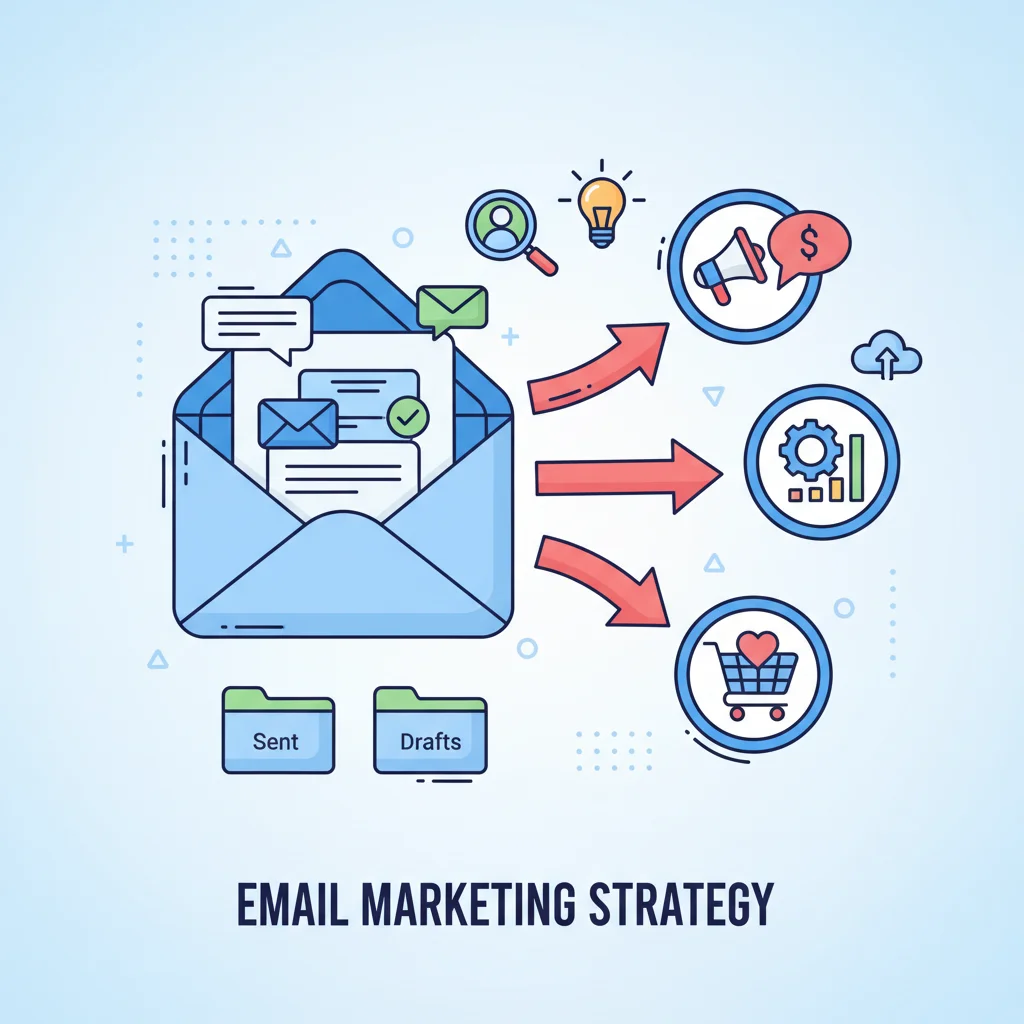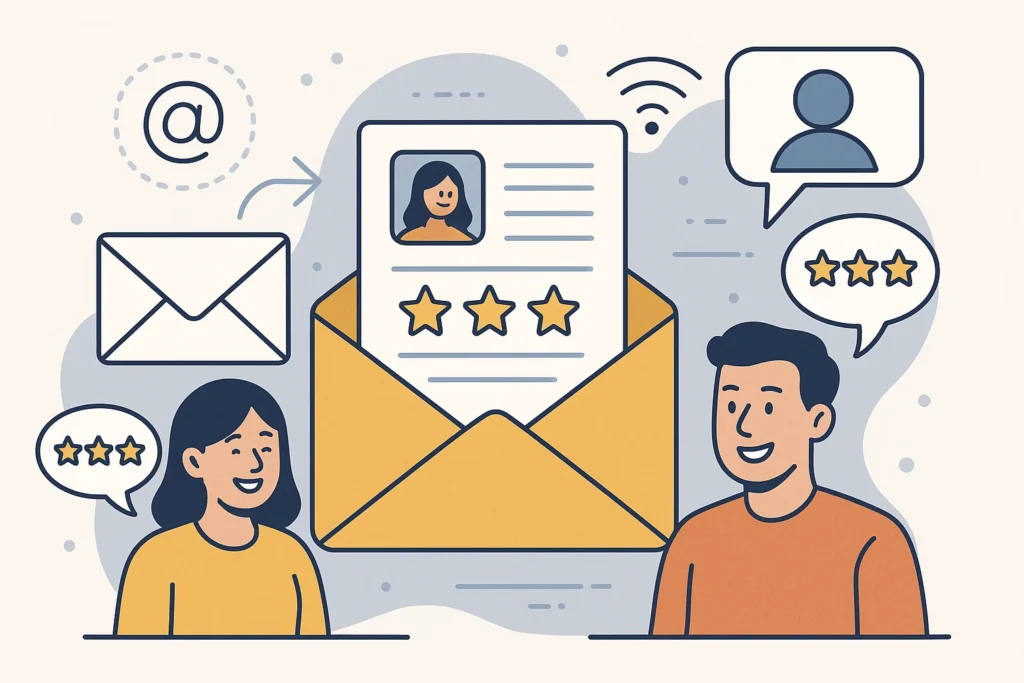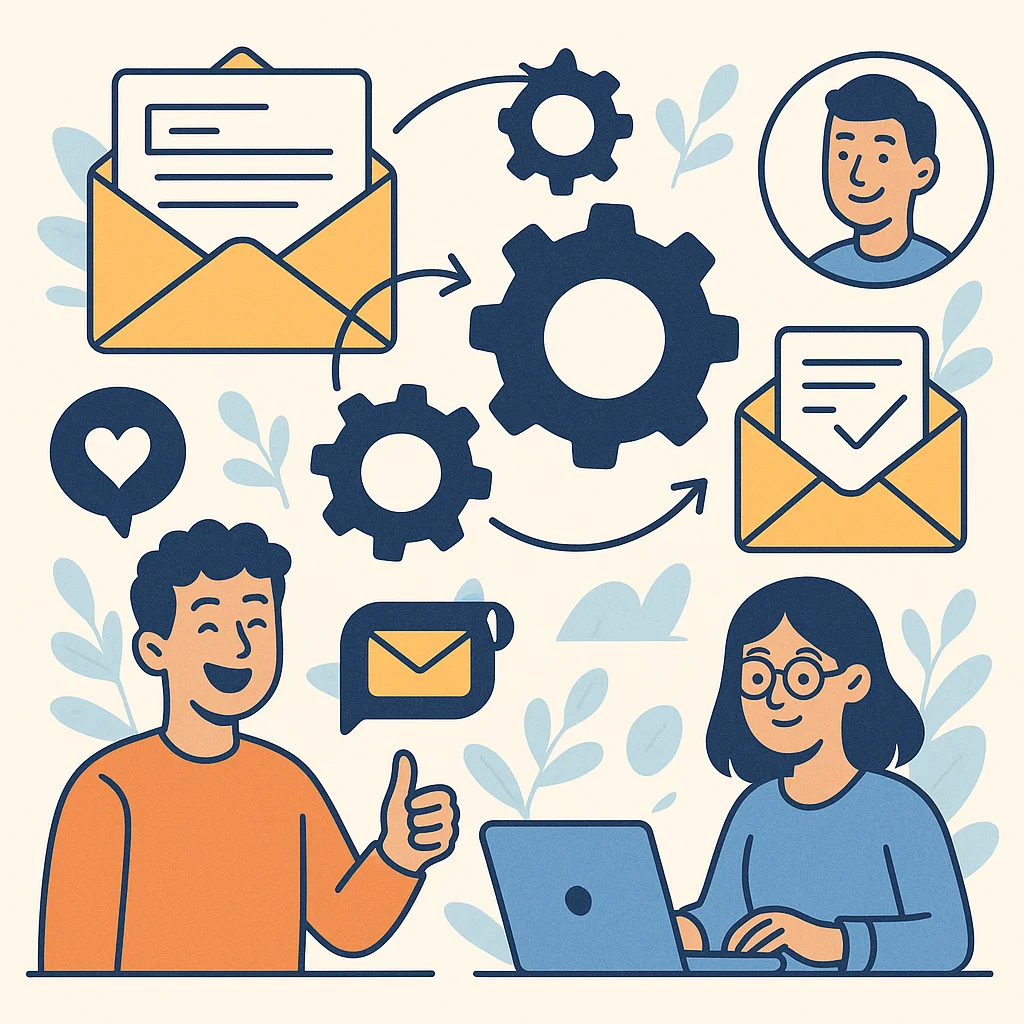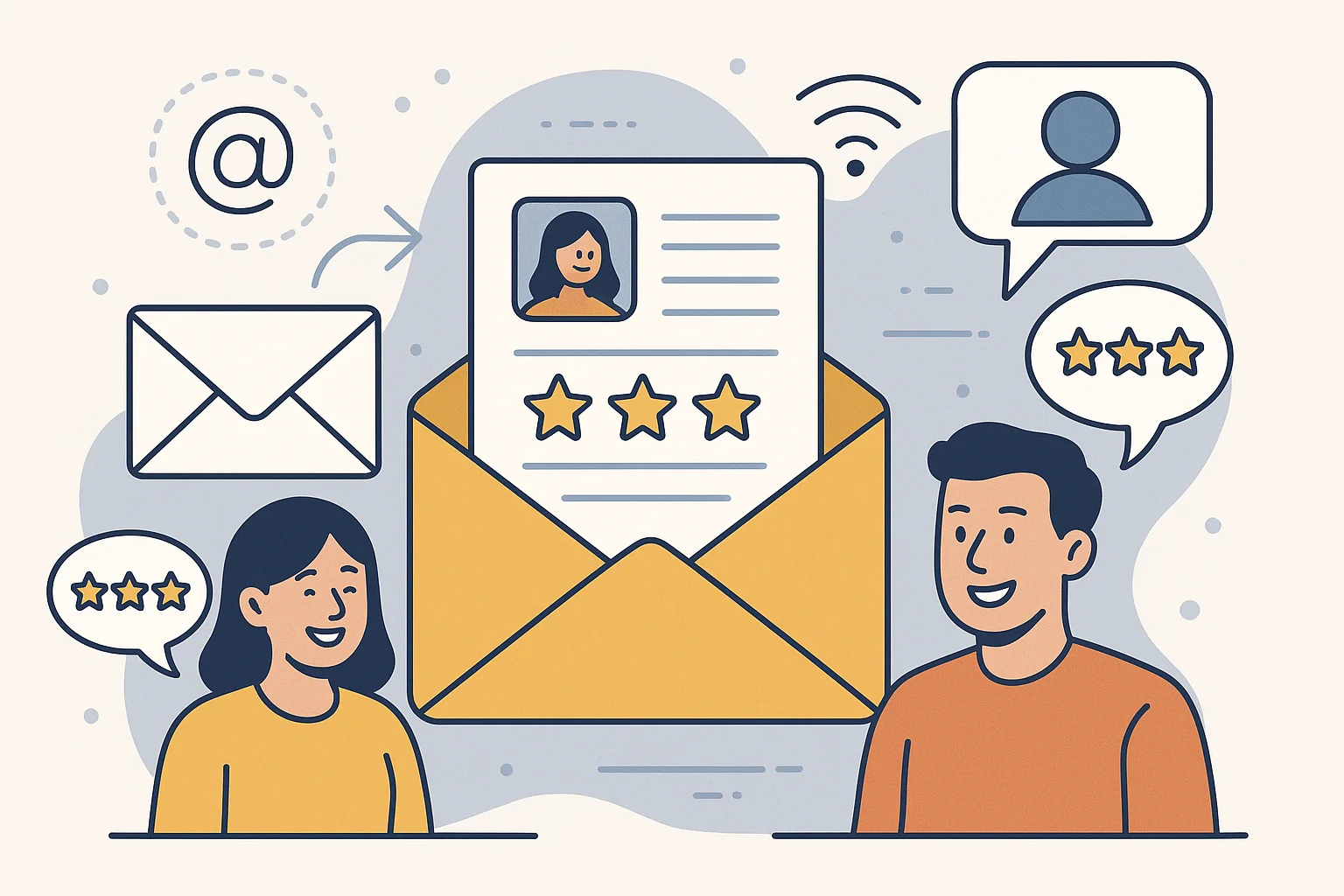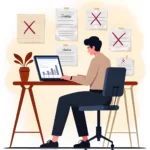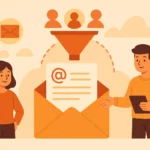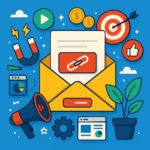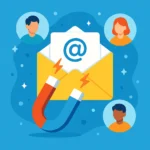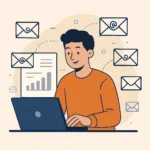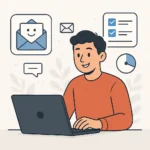Now Reading: How to Create Effective Email Marketing Campaigns for B2B Services
-
01
How to Create Effective Email Marketing Campaigns for B2B Services
How to Create Effective Email Marketing Campaigns for B2B Services
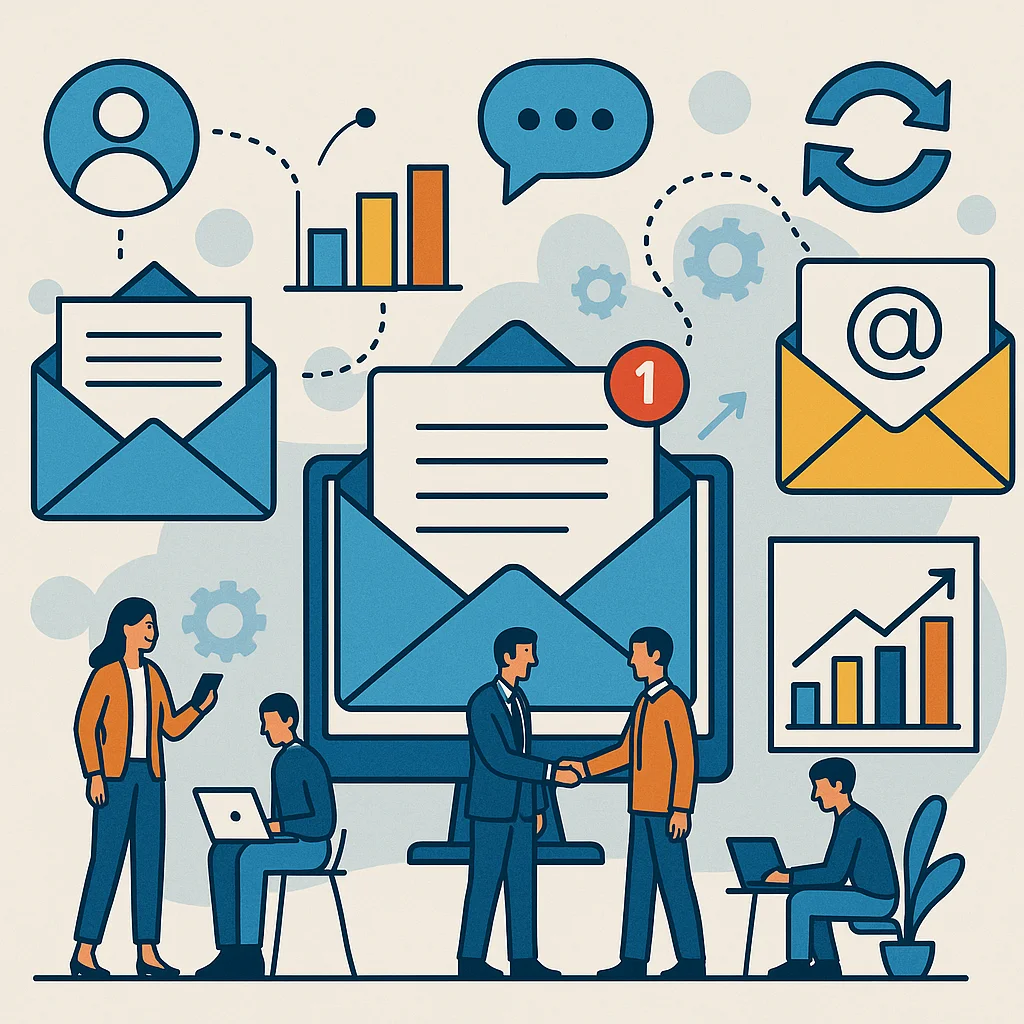
Stop sending emails that get ignored. Every day, decision-makers receive dozens of pitches, proposals, and “quick questions” that all blur together into digital white noise. But some emails break through – they get opened, read, and actually generate responses. What makes these emails different isn’t luck or magic; it’s strategy. When you master how to create effective email marketing campaigns for B2B services, you’ll join the ranks of marketers who consistently turn cold prospects into warm conversations.
Key Takeaways
Building effective B2B email campaigns requires a strategic approach that goes beyond just hitting “send.” Here’s what you need to know:
- Segment your audience based on industry, company size, and buyer journey stage for maximum relevance
- Personalize beyond first names – reference specific pain points, recent company news, or industry challenges
- Craft compelling subject lines that create curiosity without being clickbait (aim for 50 characters or less)
- Focus on one clear call-to-action per email to avoid decision paralysis
- Use proven email templates as starting points, then customize for your specific audience
- Time your sends strategically – Tuesday through Thursday, 10 AM to 2 PM typically perform best
- A/B test everything from subject lines to send times to continuously improve performance
- Build genuine relationships by providing value before asking for anything in return
Choose The Right Email Marketing Platform
Before you write a single word, you need the right foundation. Your email marketing platform is your command center – it’s where the magic happens (or doesn’t).
Look for platforms that offer robust segmentation capabilities, automation workflows, and detailed analytics. Tools like HubSpot, Mailchimp, or Saleshandy can automate repetitive tasks while giving you insights into what’s actually working.
Here’s what matters most: deliverability rates, ease of use, and integration capabilities with your existing CRM. Don’t get caught up in fancy features you’ll never use. Focus on platforms that can grow with your business and won’t break the bank.
Useful Articles:
Build And Segment Your Contact List
Your email list is only as good as its segmentation. Sending the same message to a startup founder and a Fortune 500 executive is like wearing flip-flops to a black-tie event – technically possible, but you’re gonna stand out for all the wrong reasons.
Effective Segmentation Strategies
Start with these core segmentation categories:
- Company size (startup, SMB, enterprise)
- Industry vertical (healthcare, fintech, manufacturing)
- Job role (decision-maker, influencer, end-user)
- Buyer journey stage (awareness, consideration, decision)
- Geographic location (especially important for localized services)
- Previous engagement level (highly engaged, moderately engaged, cold)
Building Your List Organically
Quality beats quantity every single time. A list of 500 highly targeted prospects will outperform 5,000 random contacts.
Here are proven list-building tactics:
- Gated content offers – whitepapers, case studies, industry reports
- Webinar registrations – educational content that attracts your ideal prospects
- Newsletter subscriptions with clear value propositions
- LinkedIn lead magnets – connect your social selling with email capture
- Trade show follow-ups – capture contacts from industry events
Craft Compelling Subject Lines That Get Opened
Your subject line is your first impression, your pickup line, and your elevator pitch all rolled into 50 characters or less. No pressure, right?
High-Converting Subject Line Formulas
Question-based subject lines create curiosity:
- “Quick question about [Company Name]’s [specific challenge]”
- “Is [Company Name] still struggling with [pain point]?”
- “How is [Company Name] handling [industry trend]?”
Benefit-focused subject lines promise value:
- “Cut [Company Name]’s [process] time by 40%”
- “3 ways [Company Name] can boost [specific metric]”
- “[Company Name] + [Your Company]: Perfect match?”
Personalized subject lines show you’ve done your homework:
- “Saw [Company Name]’s recent [news/funding/expansion]”
- “Following up on [specific event/conversation]”
- “[Mutual Connection] suggested I reach out”
What Not To Do
Avoid these subject line killers:
- ALL CAPS (looks spammy)
- Excessive punctuation (!!!)
- Generic phrases like “Quick question” without context
- Misleading promises you can’t deliver
- Industry jargon that sounds robotic
Subject: Quick question about [Company Name]'s customer onboarding
Hi [First Name],
I was checking out [Company Name]'s website and noticed you're expanding into new markets. Congrats!
Quick question: How are you handling customer onboarding at scale?
We just helped [Similar Company] reduce their onboarding time from 6 weeks to 10 days, and I'm curious if this is something [Company Name] is working on too.
Worth a brief chat?
[Your Name]Useful Articles:
Write Email Content That Converts
Great B2B email content feels like a conversation, not a sales pitch. You’re writing to one person, not broadcasting to the masses.
The PASTOR Framework For B2B Emails
Problem: Identify their specific pain point
Amplify: Show the consequences of not solving it
Story: Share a relevant example or case study
Testimonial: Include social proof
Offer: Present your solution
Response: Ask for a specific next step
Content Structure That Works
Keep it scannable – most people skim emails on mobile devices:
- Opening line: Personal and relevant
- Body: 2-3 short paragraphs max
- Call-to-action: One clear next step
- Signature: Professional but human
Personalization Beyond First Names
Real personalization requires research. Here’s how to go deeper:
- Reference recent company news or funding
- Mention specific challenges in their industry
- Connect with mutual connections or shared experiences
- Reference their content or social media posts
- Acknowledge their company’s recent achievements
Subject: Congrats on the Series B!
Hi [First Name],
Just saw the news about [Company Name]'s Series B round – $50M is impressive!
With that kind of growth capital, I imagine you're scaling your team pretty aggressively. We just helped [Similar Company] streamline their hiring process after their Series A, reducing time-to-hire from 45 days to 18 days.
Given your expansion plans, this might be relevant for [Company Name] too.
Worth a 15-minute conversation?
Best,
[Your Name]Master Different Types Of B2B Email Campaigns
Not all emails serve the same purpose. Different situations call for different approaches.
Cold Outreach Emails
Cold emails are about starting conversations, not closing deals. Your goal is to earn the right to a follow-up conversation.
Subject: [Mutual Connection] recommended I reach out
Hi [First Name],
[Mutual Connection] mentioned you're dealing with [specific challenge] at [Company Name].
We just solved a similar problem for [Similar Company], helping them [specific result].
I'm not sure if this applies to your situation, but would a brief call make sense to explore?
[Your Name]Follow-Up Emails
Most deals happen after the 5th touchpoint, but most salespeople give up after the 2nd. Persistence pays, but it needs to be valuable persistence.
Subject: Following up on [previous topic]
Hi [First Name],
I know you're probably swamped, so I'll keep this brief.
Since our last conversation about [specific topic], I came across this case study that might interest you: [Brief description of relevant case study].
Still worth exploring how this applies to [Company Name]?
[Your Name]Nurture Campaigns
Nurture emails build relationships over time. They provide value without always asking for something in return.
Subject: Thought this might interest you
Hi [First Name],
Came across this article about [relevant industry trend] and thought of our conversation about [specific challenge] at [Company Name].
[Link to valuable resource]
The section on [specific insight] particularly reminded me of what you mentioned about [their situation].
Hope it's helpful!
[Your Name]Re-engagement Campaigns
Sometimes prospects go cold. Re-engagement emails are your chance to restart the conversation.
Subject: Should I close your file?
Hi [First Name],
I haven't heard back from you in a while, so I'm assuming [specific project/challenge] isn't a priority right now.
Should I close your file, or is there a better time to reconnect?
If timing isn't right, no worries – I'll check back in a few months.
[Your Name]Useful Articles:
Optimize Email Design And Mobile Experience
73% of B2B emails are opened on mobile devices. If your emails don’t look good on a phone, you’re losing prospects before they even read your message.
Mobile-First Design Principles
Keep it simple and scannable:
- Single column layout works best on small screens
- Large, tappable buttons for calls-to-action
- Short paragraphs (2-3 sentences max)
- Plenty of white space for easy reading
- Clear hierarchy with headers and bullet points
Email Template Best Practices
Your email template should enhance your message, not distract from it:
- Consistent branding without being overwhelming
- Professional signature with contact information
- Unsubscribe link (legally required and builds trust)
- Plain text alternative for accessibility
Subject: Quick sync on [specific topic]?
Hi [First Name],
Hope your week's going well!
I wanted to follow up on our conversation about [specific challenge] at [Company Name].
Based on what you shared, I think there might be a good fit with what we're doing at [Your Company].
Would a 20-minute call next week work to explore this further?
I'm free:
* Tuesday 2-4 PM
* Wednesday 10 AM-12 PM
* Thursday 3-5 PM
Let me know what works!
Best,
[Your Name]
[Title]
[Company]
[Phone]Timing And Frequency Strategy
When you send your emails matters almost as much as what you send. Timing can make the difference between an opened email and a deleted one.
Optimal Send Times For B2B
Tuesday through Thursday consistently perform best:
- Tuesday 10 AM – 12 PM: People are settled into their week
- Wednesday 10 AM – 2 PM: Peak engagement window
- Thursday 9 AM – 11 AM: Last chance before weekend planning
Avoid these times:
- Monday mornings (inbox overload from weekend)
- Friday afternoons (weekend mindset kicks in)
- Early mornings or late evenings (respect work-life boundaries)
Follow-Up Frequency
Space your follow-ups strategically:
- First follow-up: 3-5 days after initial email
- Second follow-up: 1 week after first follow-up
- Third follow-up: 2 weeks after second follow-up
- Final follow-up: 1 month after third follow-up
Seasonal Considerations
B2B buying patterns follow predictable cycles:
- January-March: Budget planning and new initiatives
- April-June: Implementation and execution focus
- July-August: Summer slowdown (vacation season)
- September-November: Final push before year-end
- December: Holiday slowdown and budget finalization
A/B Testing Your Email Campaigns
Assumptions kill conversion rates. What works for one audience might flop with another. That’s why systematic testing is non-negotiable.
What To Test First
Start with high-impact elements:
- Subject lines (biggest impact on open rates)
- Call-to-action buttons (affects click-through rates)
- Email length (short vs. detailed)
- Send times (morning vs. afternoon)
- Personalization level (basic vs. advanced)
Testing Methodology
Keep it scientific:
- Test one variable at a time (don’t muddy the results)
- Use statistically significant sample sizes (minimum 100 recipients per variation)
- Run tests for full business cycles (at least one week)
- Document everything (what you tested, results, insights)
Common Testing Mistakes
Avoid these pitfalls:
- Testing too many variables simultaneously
- Stopping tests too early
- Not accounting for external factors (holidays, industry events)
- Ignoring statistical significance
- Not implementing winning variations
Advanced Personalization Techniques
Basic personalization is table stakes now. To really stand out, you need to go deeper than first names and company names.
Behavioral Personalization
Use their actions to inform your approach:
- Website behavior: Pages visited, content downloaded, time spent
- Email engagement: Opens, clicks, forwards, replies
- Social media activity: Posts, shares, comments, connections
- Event participation: Webinars attended, conferences, trade shows
Contextual Personalization
Reference their current situation:
- Recent company news: Funding, acquisitions, leadership changes
- Industry trends: Regulations, market shifts, competitive pressures
- Seasonal factors: Budget cycles, planning periods, busy seasons
- Geographic considerations: Local events, regional challenges
Subject: Saw the TechCrunch article about [Company Name]
Hi [First Name],
Just read about [Company Name]'s expansion into the European market – exciting move!
I imagine the compliance requirements are pretty complex. We just helped [Similar Company] navigate similar challenges when they expanded internationally.
The regulatory piece was particularly tricky, but we managed to reduce their compliance overhead by 60%.
Worth a conversation about how this might apply to your situation?
[Your Name]Integration With Your Sales Process
Email marketing shouldn’t exist in a vacuum. The most effective campaigns integrate seamlessly with your broader sales and marketing efforts.
CRM Integration
Your email platform should talk to your CRM:
- Automatic lead scoring based on email engagement
- Trigger-based sequences from CRM status changes
- Unified contact history across all touchpoints
- Sales notification when prospects engage with emails
Lead Handoff Process
Smooth transitions from marketing to sales:
- Clear qualification criteria for when leads get passed to sales
- Comprehensive lead intelligence including email engagement history
- Warm introduction process that references email conversations
- Feedback loop from sales back to marketing on lead quality
Multi-Channel Coordination
Email works best as part of a coordinated approach:
- LinkedIn outreach that references email conversations
- Phone calls that follow up on email engagement
- Content marketing that supports email messaging
- Social selling that amplifies email relationships
Creating effective email marketing campaigns for B2B services isn’t about sending more emails – it’s about sending better ones. When you combine strategic segmentation, compelling content, and systematic optimization, your emails become conversation starters that drive real business results. Start with one or two of these strategies, test them thoroughly, and build from there.


